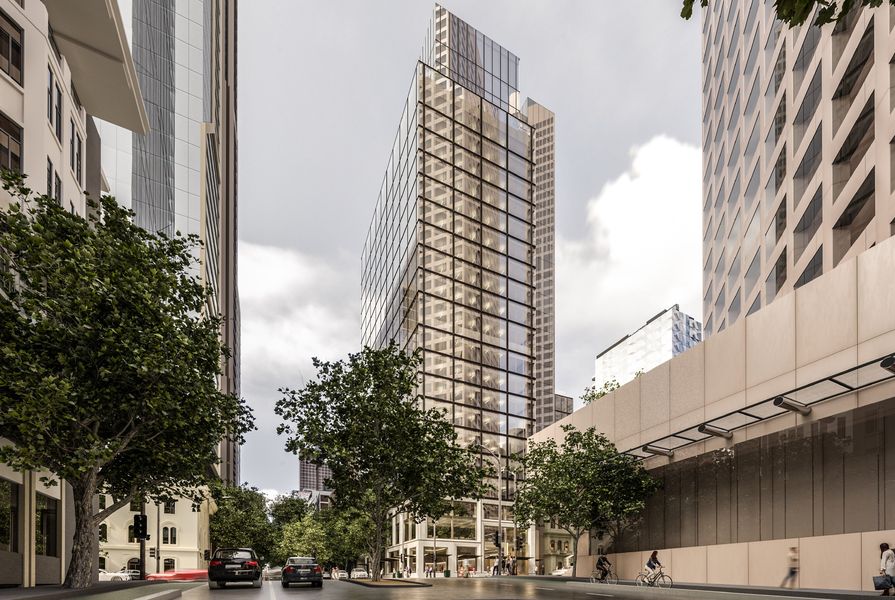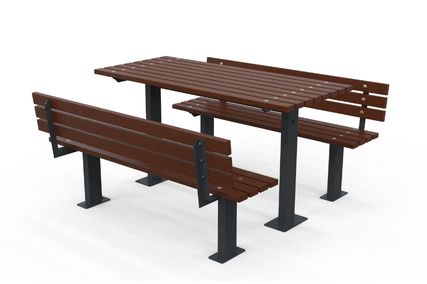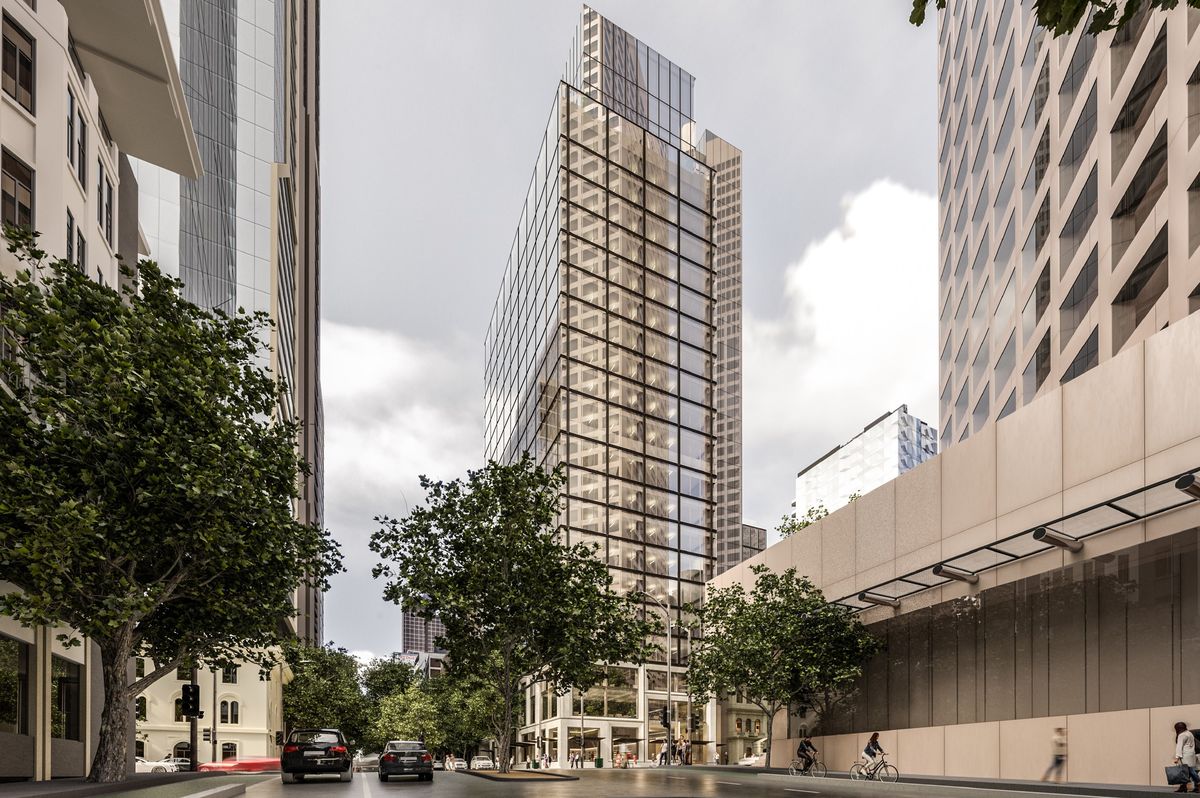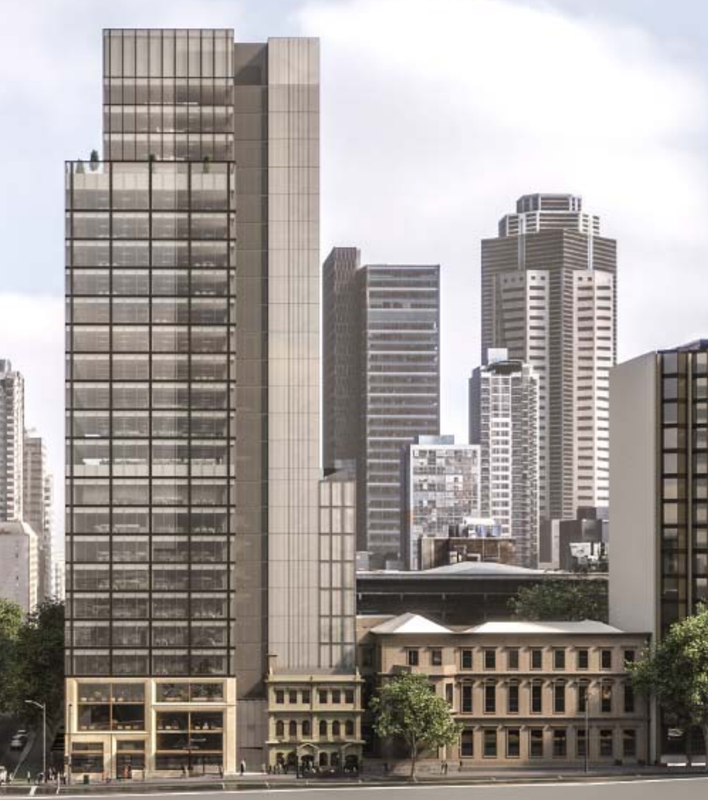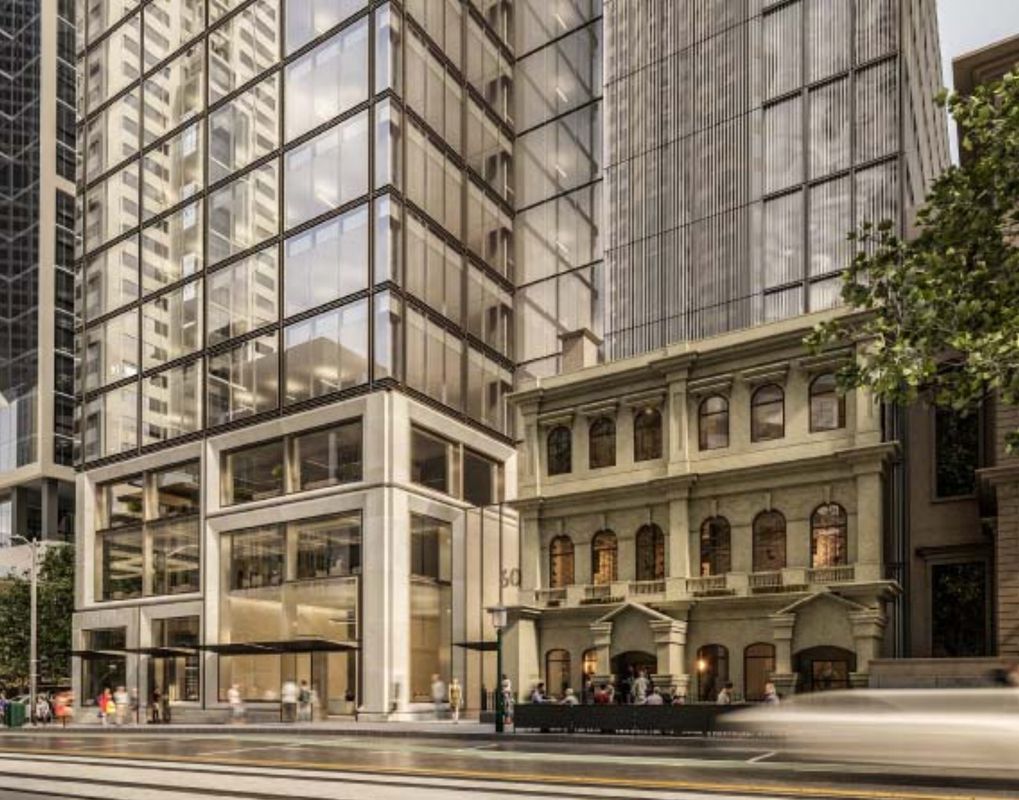City of Melbourne councillors have voted in favour of a Bates Smart designed tower proposed for “the Paris end” of Collins Street, going against the advice of council planners who called for the proposal to be rejected.
The 26-storey tower at 52-60 Collins Street would house retail premises and office space, and would call for the demolition of the existing office building at 60 Collins Street (a C graded or “contributory” heritage building) and partial demolition of Melville House at 52 Collins Street, a three-storey former Victorian residence included on the Victorian Heritage Register.
The form and proportions of the lower levels of the building would be designed to “generally reflect that of the retained element of Melville House” and would be formed of textured masonry. The tower above, by contrast, would be characterized by “high performance curtain walling and metal framing.”
The advice given to councillors by planner Jane Birmingham was that the tower would create excessive overshadowing, and that the proposed building height and resultant dominance of the service core behind the heritage Melville House would be an unacceptable outcome.
“It is considered that these matters could not be resolved by way of permit conditions given the extent of the changes required,” Birmingham said in her advice. “Fundamental alterations are required, including a reduction in height and the internal reconfiguration of the building in order to relocate the service core and provide improved façade treatments behind Melville House.”
At the Future Melbourne committee meeting on 17 March, however, councillors voted unanimously to not object to the proposal., provided that the tower element is reconfigured to curb excessive overshadowing, and the façade treatment is updated to demonstrate a respectful relationship with the heritage Melville House building.
As proposed, the building would create shadow over around 40 percent of the public-private forecourt of Collins Place. Councillors agreed that the tower would be acceptable if the shadowing “between11.00 am and 2.00pm on 22 September [does] not extend over more than 30 percent of this space.”
Speaking in favour of the proposal, councillor Nicholas Reece dubbed Bates Smart’s design “exceptional,” praising the proposed use of materials, the new through-block link between Collins Street and McGrath’s Lane, and the consideration given to how the building would be seen from eye-level.
“I do think this design responds well to the context around the top end of Collins Street, the Paris end of Collins street,” he said. “On a location like this, the truth is that we’re always going to be looking for a higher standard, because this is our premier business street, and with these new buildings we’re looking for that absolute highest standard. And I do think this proposal in large parts achieves that.”
The council has referred the application to the Department of Environment, Land, Water and Planning.

